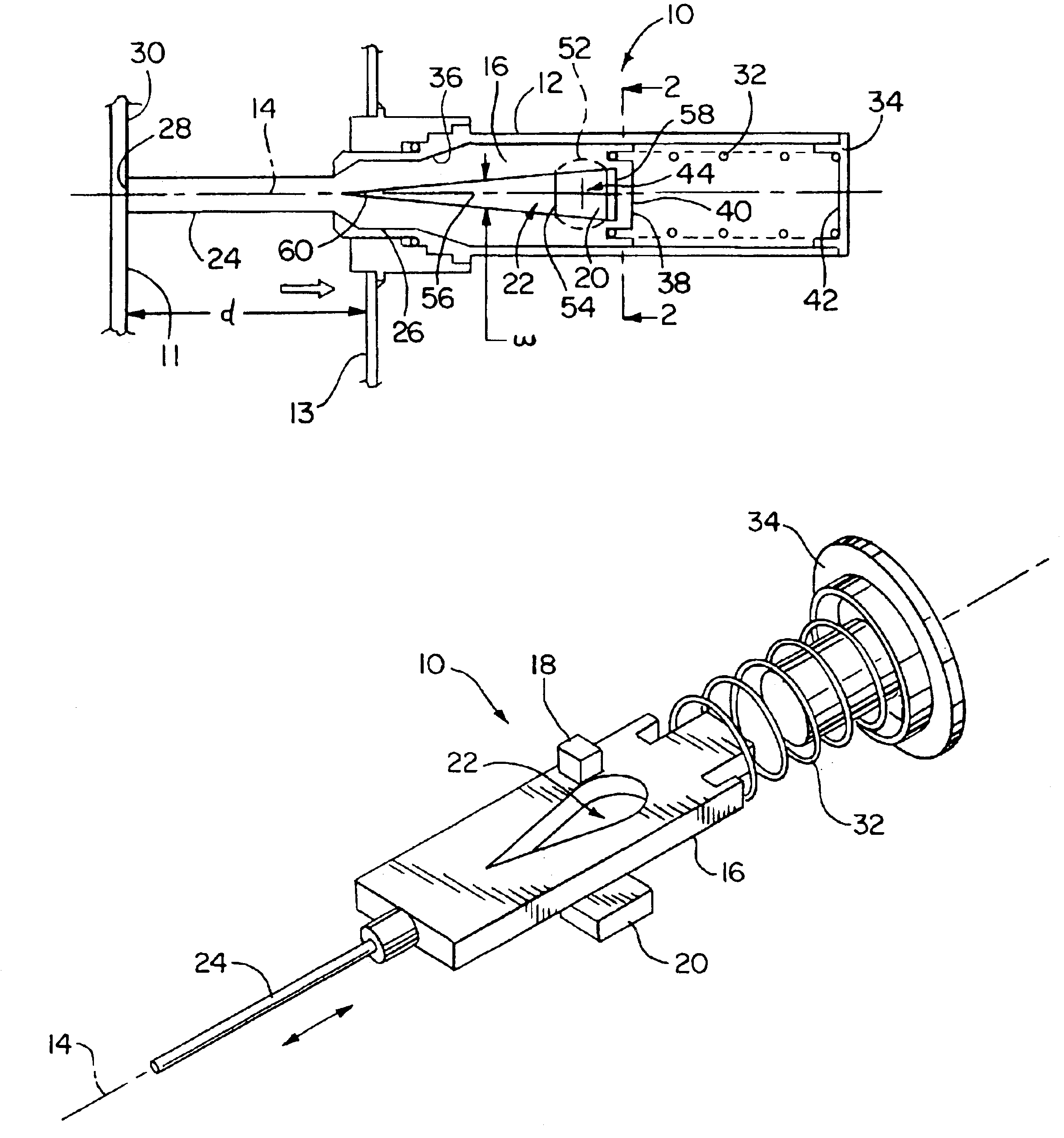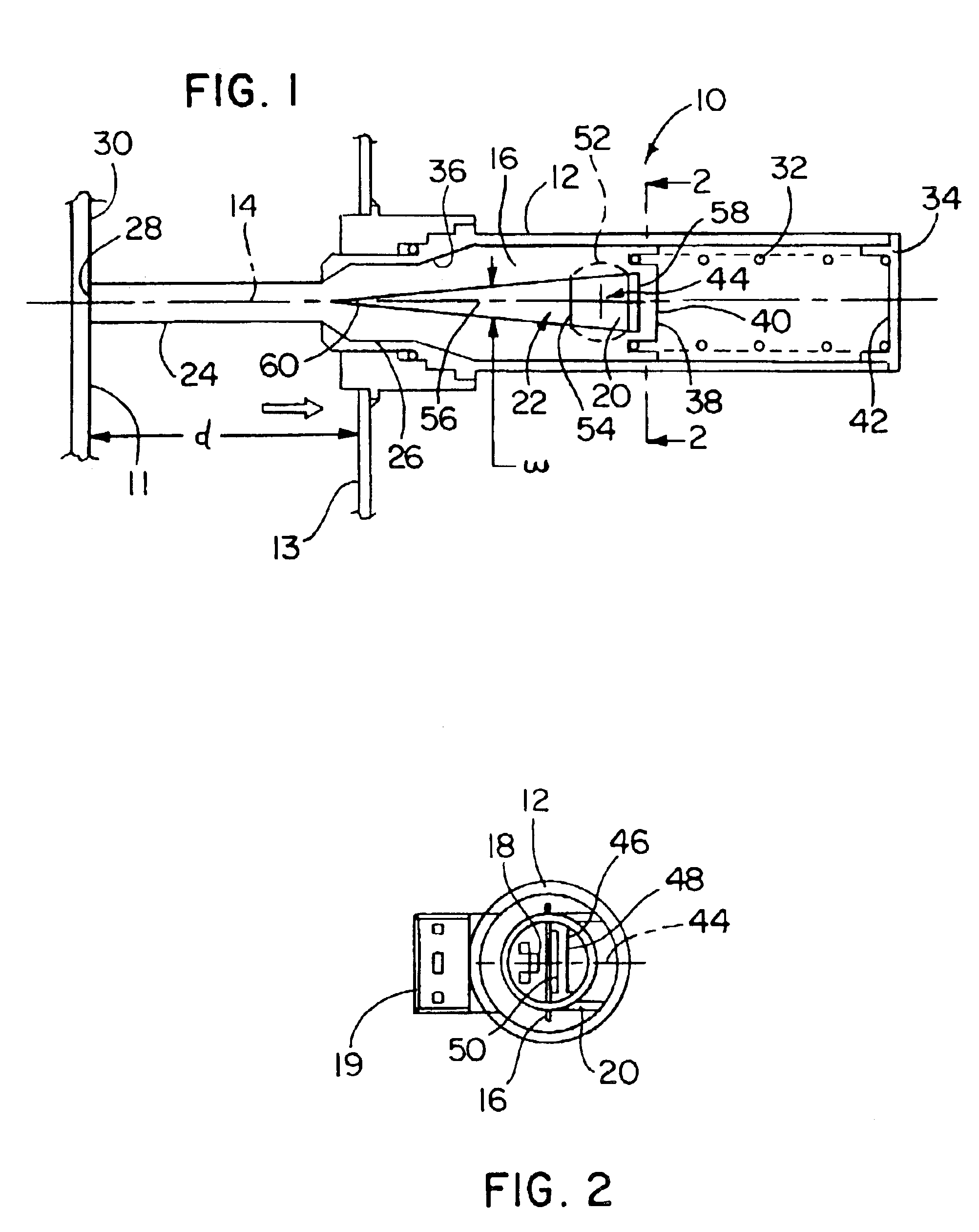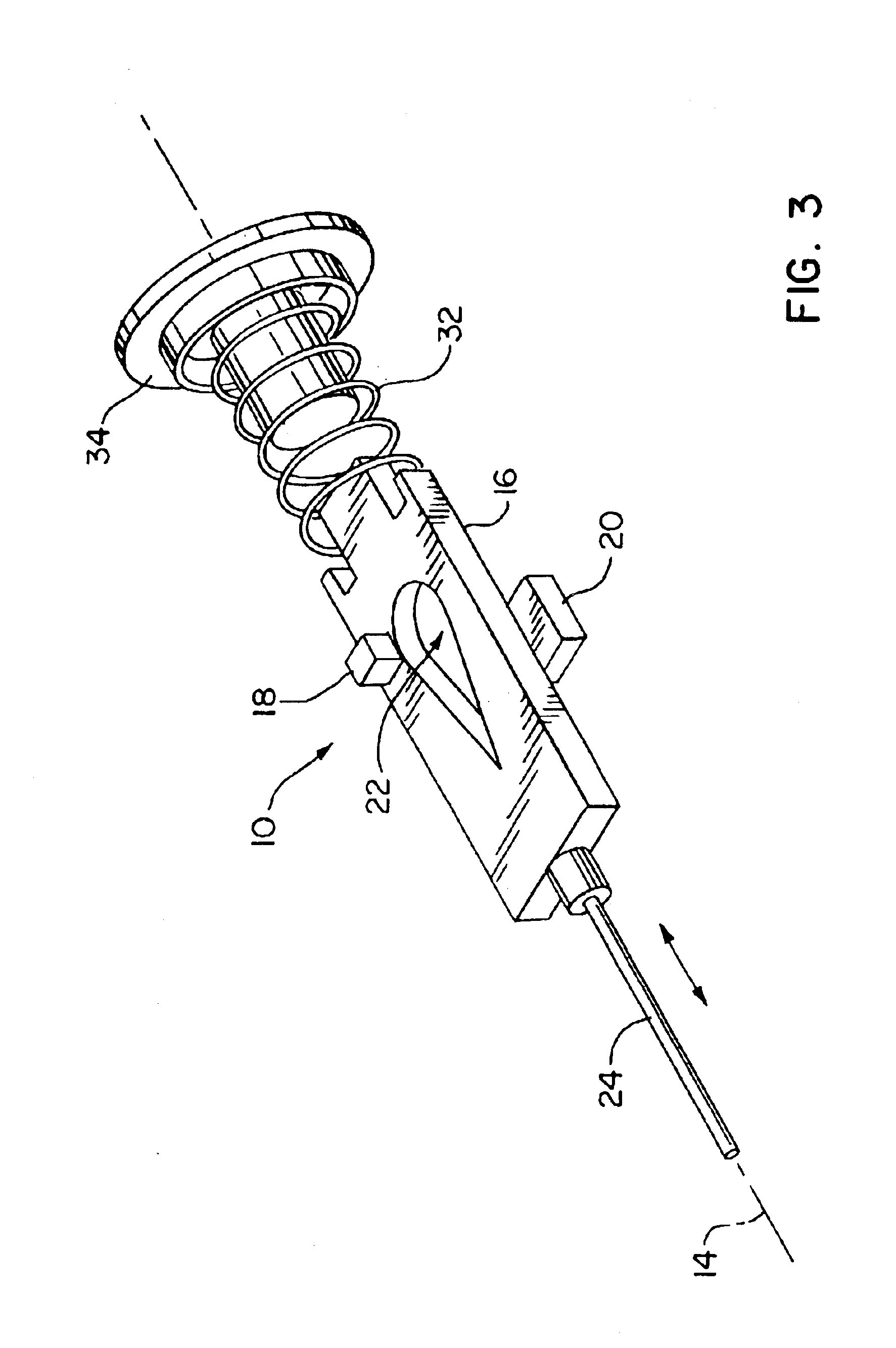Position sensing by measuring intensity of magnetic flux passing through an aperture in a movable element
a technology of magnetic flux and aperture, applied in the field of position sensors, can solve the problems of reducing the ruggedness and reliability of the sensor, the difficulty of achieving a true linear relationship between the position and the sensing element, and the addition of sensing elements and signal processing circuitry
- Summary
- Abstract
- Description
- Claims
- Application Information
AI Technical Summary
Benefits of technology
Problems solved by technology
Method used
Image
Examples
second embodiment
[0019]FIG. 3 is an exploded perspective view of the internal elements of a position sensor 10 having some differences, as explained below, from the sensor 10 of FIGS. 1 and 2. The same reference numerals are used for similar elements in the following descriptions of the first and second exemplary embodiments, as shown in FIGS. 1-3.
[0020]The movable element is configured as a vane 16 of ferromagnetic material mounted in the housing 12 for sliding movement along the axis of motion 14. The vane 16 includes an aperture 22 extending through the vane 16 in a direction transverse to the axis of motion 14. A connection, in the form of pin 24, extends from a first axial end 26 of the vane 16 and out of the housing 12 for receiving a positional input from a point of contact 28 with a surface 30 of a translating wall 11 external to the sensor 10.
[0021]The sensing element 18 is fixedly attached to the housing 12 adjacent one side of the vane 16 for sensing magnetic flux passing through the aper...
first embodiment
[0024]As shown in FIG. 3, the magnet 20 of the second exemplary embodiment of a linear position sensor 10 has a flat planar body with a periphery that is rectangular, rather than circular as is the case for the magnet 20 of the first embodiment shown in FIGS. 1 and 2. The shape of the magnet 20 has an effect on the linearity of an output signal generated by the sensing element 18, and can be judiciously selected to fine tune the performance of the position sensor 10 in a manner that is desirable for various embodiments of our invention.
[0025]The aperture 22 in the vane 16 has a width ‘w’ transverse to the axis of motion 14 that varies along the axis of motion 14. The width ‘w’ can vary in either a linear or a non-linear manner along the axis of motion 14, to allow the intensity of the magnetic flux passing through the aperture from the magnet 20 to the sensing element 18 to vary in relation to the position ‘d’ in a manner that produces a desired relationship between the position ‘d’...
PUM
 Login to View More
Login to View More Abstract
Description
Claims
Application Information
 Login to View More
Login to View More - R&D
- Intellectual Property
- Life Sciences
- Materials
- Tech Scout
- Unparalleled Data Quality
- Higher Quality Content
- 60% Fewer Hallucinations
Browse by: Latest US Patents, China's latest patents, Technical Efficacy Thesaurus, Application Domain, Technology Topic, Popular Technical Reports.
© 2025 PatSnap. All rights reserved.Legal|Privacy policy|Modern Slavery Act Transparency Statement|Sitemap|About US| Contact US: help@patsnap.com



